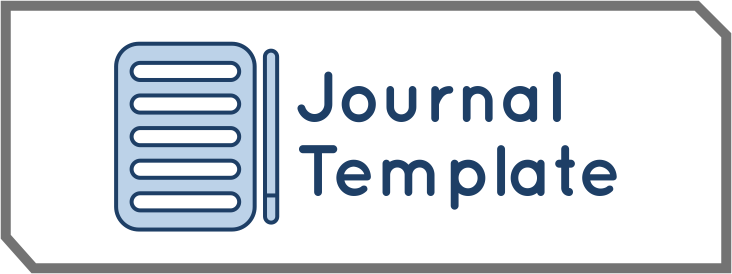Analisis Kadar Flavonoid Total dan Aktivitas Antioksidan dari Ekstrak Etanol Serta Fraksi dari Gagang Cengkeh (Syzygium Aromaticum (L)).
DOI:
https://doi.org/10.57214/jka.v9i2.989Keywords:
ABTS, Antioxidant activity, Clove, IC₅₀, Total flavonoidAbstract
Antioxidants are substances that can inhibit oxidation caused by free radicals. Flavonoids are effective natural antioxidants due to their unique chemical structure. Both have a hydroxyl group (-OH) attached to an aromatic ring. This hydroxyl group can donate hydrogen or electrons to free radicals. Clove stems (Syzygium aromaticum (L.)) are known to possess bioactive compounds, including flavonoids like quercetin and kaempferol, which act as antioxidants in protecting cells from free radicals. Maceration is a commonly used extraction method to obtain therapeutic compounds from plants. The process involves soaking the finely or coarsely ground plant material in a solvent (liquid thinner) in a closed container. Fractionation is a method for separating chemical components in an extract based on differences in their polarity or solubility. This process uses two immiscible solvents. This study is an experimental research aimed at determining the total flavonoid content (TFC) and the IC50 value of the antioxidant activity present in the ethanol extract and fractions of clove stems (Syzygium aromaticum (L.)) using the ABTS method. The tests utilized maceration extraction with 96% ethanol as the solvent, and liquid-liquid fractionation using N-hexane, ethyl acetate, and water as solvents, along with UV-Vis spectrophotometry analysis. The results showed that the highest flavonoid content was in the ethanol extract, with a TFC value of 51.000 mgQE/g, and the highest antioxidant activity was in the ethyl acetate fraction, with an IC50 value of 23.716 µg/mL, indicating a strong potential as a source of natural antioxidants.
References
Anggraeni Putri, P., et al. (2023). Karakteristik saponin senyawa metabolit sekunder pada tumbuhan.
Aryanti, E., Sari, H. R., & Setyawan, R. D. (2021). Penentuan panjang gelombang maksimum dan konsentrasi total senyawa fenolik pada ekstrak metanol gagang cengkeh (Syzygium aromaticum L.) sebagai antioksidan. Jurnal Sains dan Kesehatan, 3(2), 101–106.
Cortés-Rojas, D. F., de Souza, C. R. F., & Oliveira, W. P. (2014). Clove (Syzygium aromaticum): A precious spice. Asian Pacific Journal of Tropical Biomedicine, 4(2), 90–96. https://doi.org/10.1016/S2221-1691(14)60215-X
Istikhomah, D. N., & Fadhila, H. (2025). Analisis kadar flavonoid total infused water chia (Salvia hispanica L.) seed dengan variasi lama penyimpanan secara spektrofotometri UV-Vis. Jurnal Insan Farmasi Indonesia, 8(1), 1–11. https://doi.org/10.36387/jifi.v8i1.1984
Kementerian Kesehatan Republik Indonesia. (2022). Suplemen I farmakope herbal Indonesia (Edisi II). Departemen Kesehatan Republik Indonesia.
Kurniawati, I., & Sutoyo. (2021). Perbandingan aktivitas antioksidan ekstrak etanol kulit buah naga merah (Hylocereus polyrhizus) dan buah naga putih (Hylocereus undatus) dengan metode DPPH. Jurnal Ilmu Farmasi dan Farmasi Klinik, 18(1), 1–8.
Mahayasih, P. A., Karyawati, D., & Ningsih, N. P. (2022). Uji aktivitas antioksidan ekstrak etanol daun salam (Syzygium polyanthum) dengan metode DPPH dan penetapan kadar flavonoid total. Jurnal Ilmiah Farmasi, XX(Y), 1–10. https://doi.org/10.35760/jff.2023.v1i1.8070
Mariana, E., et al. (2018). Validasi metode penetapan kuantitatif metanol dalam urin menggunakan gas chromatography-flame ionization detector. Indonesian Journal of Chemical Science, 7(3), 277–284.
Max, K. (2024). Cengkeh tanaman rempah berkhasiat untuk kesehatan. Universitas Muhammadiyah Sumatera Utara. https://umsu.ac.id/berita/cengkeh-tanaman-rempah-berkhasiat-untuk-kesehatan/
Oktaviani, S., Lestari, D. S., & Puspita, A. (2015). Penentuan nilai IC50 (Inhibition Concentration 50%) ekstrak etanol daun belimbing wuluh (Averrhoa bilimbi L.) sebagai antioksidan dengan metode ABTS. Jurnal Sains dan Kesehatan, 2(1), 12–18.
Phaniendra, A., Jestadi, D. B., & Periyasamy, L. (2015). Free radicals: Properties, sources, targets, and their implication in various diseases. Indian Journal of Clinical Biochemistry, 30(1), 11–26. https://doi.org/10.1007/s12291-014-0446-0
Prasetya, D. N., et al. (2021). Aktivitas antioksidan dan kadar flavonoid total pada ekstrak etanol dan fraksi daun sirsak (Annona muricata L.). Jurnal Fitofarmaka Indonesia, 8(3), 101–108.
Rachmani, S. N., Prihanto, A., & Nisa, F. (2018). Aktivitas antioksidan ekstrak etanol daun kemangi (Ocimum basilicum L.) dan fraksinya dengan metode DPPH. Jurnal Ilmu Farmasi Indonesia, 16(1), 10–17. https://doi.org/10.36465/jkbth.v16i1.161
Safitri, Y. D., & Fatimah, F. (2023). Analisis toksisitas dan aktivitas antioksidan pada ekstrak gagang cengkeh (Syzygium aromaticum). Metamorfosa: Journal of Biological Sciences, 10(1), 120. https://doi.org/10.24843/metamorfosa.2023.v10.i01.p12
Safitri, Y. D., & Purnamawati, N. E. D. (2021). Perbandingan aktivitas antibakteri ekstrak metanol gagang dan bunga cengkeh (Syzygium aromaticum) terhadap bakteri Staphylococcus aureus ATCC 25923. Jurnal Sains dan Kesehatan, 3(3), 410–416. https://doi.org/10.25026/jsk.v3i3.354
Satria, R., Hakim, A. R., & Darsono, P. V. (2022). Penetapan kadar flavonoid total dari fraksi n-heksana ekstrak daun gelinggang dengan metode spektrofotometri UV-Vis. Journal of Engineering, Technology, and Applied Science, 4(1), 33–46. https://doi.org/10.36079/lamintang.jetas-0401.353
Downloads
Published
How to Cite
Issue
Section
License
Copyright (c) 2025 Jurnal Kesehatan Amanah

This work is licensed under a Creative Commons Attribution-ShareAlike 4.0 International License.








